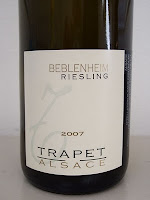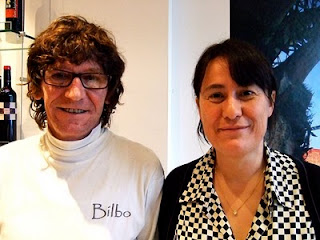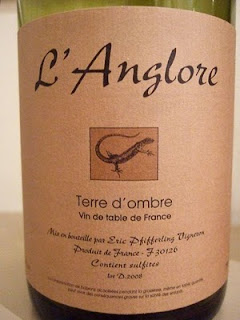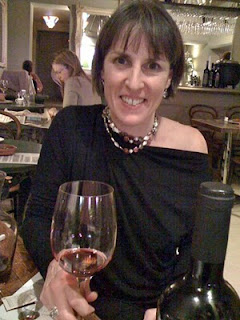
If you’re a fan of Terroirs, London’s leading natural wine bar and restaurant, you’ll no doubt have heard of its new East End offshoot Brawn which opened a couple of weeks ago in Columbia Road.
It was set up in what looks like a former industrial unit by Terroirs talented chef Ed Wilson who lives in the neighbourhood and “wanted the kind of restaurant I want to go to on my doorstep”.
In fact he’s created the sort of restaurant any and every natural wine lover would want to go to: friendly, relaxed with simply cooked brilliant ingredients and a terrific selection of natural wines.

We went there for the Guardian Christmas lunch and grazed through an ridiculous amount of food - oysters, two selections of charcuterie, one Italian, one French, several plates of seafood (langoustines, mussels, clams and squid), a cassoulet-like dish called mongetes, andouillette and chips (passed on that one), a sublime zander boudin with shellfish sauce and some wonderfully airy (they needed to be) îles flottantes. I could hardly eat for the next 24 hours.
We also drank some excellent wines (though I can’t vouch for the accuracy of my tasting notes)

* An extraordinary deep salmon-coloured 2009 Pet Nat de Raisins from Domaine de la Tournelle in the Jura made from Ploussard (aka Poulsard). I don’t always find ‘pet nat’ convicing but this was just delicious
* A 2009 Anjou Sec from Agnes and René Mosse - a typically rich natural Chenin
* La Guillaume 2009 from Jean Maupertuis - a deliciously fresh gamay from the Auvergne which we drank with the charcuterie
* Domaine Matassa Cuvée Alexandria 2008, a rich, earthy vin de pays des Cotes Catalanes from the Roussillon (brilliant with the zander boudin and shellfish sauce
* And a funky bottle of Jean-François Nicq’s 2007 Les Glaneurs, from Domaine des Foulards Rouge (decanted) which was brilliant with the mongetes

What was great was the way we shifted from red to white without the least sense of that being inappropriate.
The food and the wines will change all the time depending on availability and Ed’s whim. You should be able to keep track of both via their
website which should be up shortly.
The one downside is that Brawn is not well served by public transport. It’s about a 10 minute walk from Hoxton tube and railway station, about 15 minutes from Bethnal Green tube or take a 55 bus from Old Street. It’s also had such rave reviews you may find it hard to get a booking. But you should definitely make the effort to go.
I just wished I lived round the corner.
The address is 49 Columbia Road, London, E2 7RG. (020) 7729 5692
 Maybe the cold I had before Christmas has taken the edge off my palate but if I’d tasted Thierry Germain’s L’Insolite 2008 blind I’d have placed it as a Sauvignon rather than a Chenin Blanc. On the other hand I didn’t have any problems getting the typically Gamay flavours of the Lapierre Beaujolais on Christmas Day so maybe it is an oddball.
Maybe the cold I had before Christmas has taken the edge off my palate but if I’d tasted Thierry Germain’s L’Insolite 2008 blind I’d have placed it as a Sauvignon rather than a Chenin Blanc. On the other hand I didn’t have any problems getting the typically Gamay flavours of the Lapierre Beaujolais on Christmas Day so maybe it is an oddball.










